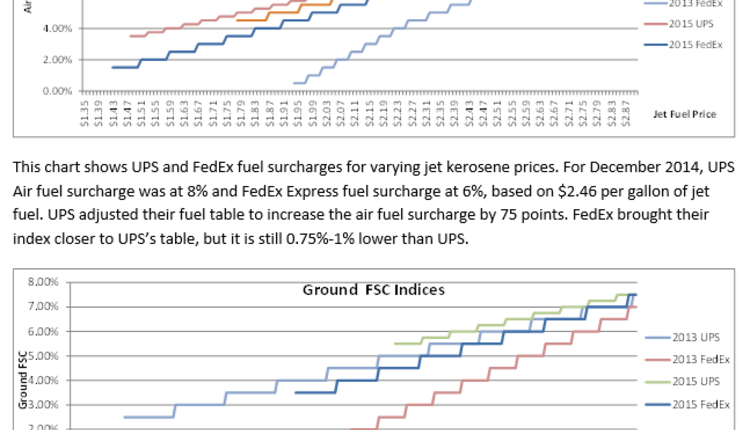In last month’s article, I touched upon a couple points on saving opportunities in parcel packaging. In this article, I’ll try to list some of the most commonly used cushioning and void fill materials. The main purpose of cushioning is obvious: to protect the items from damage during transit. Packages are stacked, dropped and are subject to shocks and vibrations during transit. The commonly-used “this way up” or “do not stack” labels cannot be honored in the parcel environment. So it should be noted that your box can wind up in any orientation and may receive pressure or shock from any side.
By using proper cushioning and void fills you can:
· eliminate or decrease shocks to the contents of the package
· prevent shifting of the contents of the box
· prevent items from damaging each other if there is more than one item in the box
The proper packaging material can be selected based on: the item’s characteristics, the risk of damage, the replacement value of the item and the cost of the fill material.
Foam Peanuts: One of the most popular cushioning materials, peanuts are light weight and fill the gaps between the items and box completely. They require more storage space in the packaging stations compared to air filled cushions or paper. Polystyrene peanuts can develop static, making them cling to the items and get messy, and threaten electronics. Biodegradable peanuts provide an environmentally safe option however some types can attract insects and rodents. Vibration during transit can cause the items in the package to sink through the peanuts and reach the bottom of the package. This would result in reduced protection against shocks. Layers of styrofoam can be placed on all sides of the package to increase protection.
Air bubble sheets: Perhaps the most versatile type of cushioning material, air bubble sheets come in different bubble sizes for different applications. Thinner sheets are more suitable for placing between items, while larger bubbled sheets provide void filling besides cushioning. They can be obtained in ready-to-use rolls or inflated on site.
Air filled bags: Unlike peanuts, air pillows require very little storage space on the packaging stations, as they are inflated on demand. They provide some cushioning but they are more ideal for void-fill. The volume of air-filled bags can be affected by changes in the surrounding temperature, so they can shrink or expand during transit. New technologies allow the box to be sealed first and then an air bag inside the box to be inflated to a certain pressure, filling the void completely.
Paper: Heavier weight paper can be crumpled and filled around the items. Although it’s inexpensive and available, its cushioning ability is reduced quickly under pressure.
Polyurethane foam filled bags: Two chemicals are mixed at the packing station to fill polyurethane into bags. These bags are placed in the package under and above the item to be shipped, and they rise and form into the shape of the item and the box, offering ultimate protection, but at a significantly higher cost compared to alternatives.
Molded pulp / foam: Items can be protected by molded structures made from pulp or foam placed at the edges or corners. Unlike loose fill materials, they need to be manufactured beforehand. However they eliminate shifting of the items and provide shock protection by providing space between the box and the item. Since molded cushions need to be designed and manufactured, their cost can be justified at high numbers.
Reducing voids: Some items don’t require cushioning since they won’t be damaged by shocks (publications, printed material for example). A great way to eliminate shifting in the package is to eliminate the void instead of filling it. Boxes can be custom sized per shipment so that there is no void at the top of the box. A lid is glued to the top of the box, securing the contents against shifting.
Baris Tasdelen is a Transportation Analyst at enVista LLC. He builds data analysis tools for transportation cost savings and contract negotiations. His areas of expertise include transportation rating and analysis, shipping best practices, transportation data modeling, mode optimization, and transportation network and practice optimization. Baris can be reached at btasdelen@envistacorp.com.
By using proper cushioning and void fills you can:
· eliminate or decrease shocks to the contents of the package
· prevent shifting of the contents of the box
· prevent items from damaging each other if there is more than one item in the box
The proper packaging material can be selected based on: the item’s characteristics, the risk of damage, the replacement value of the item and the cost of the fill material.
Foam Peanuts: One of the most popular cushioning materials, peanuts are light weight and fill the gaps between the items and box completely. They require more storage space in the packaging stations compared to air filled cushions or paper. Polystyrene peanuts can develop static, making them cling to the items and get messy, and threaten electronics. Biodegradable peanuts provide an environmentally safe option however some types can attract insects and rodents. Vibration during transit can cause the items in the package to sink through the peanuts and reach the bottom of the package. This would result in reduced protection against shocks. Layers of styrofoam can be placed on all sides of the package to increase protection.
Air bubble sheets: Perhaps the most versatile type of cushioning material, air bubble sheets come in different bubble sizes for different applications. Thinner sheets are more suitable for placing between items, while larger bubbled sheets provide void filling besides cushioning. They can be obtained in ready-to-use rolls or inflated on site.
Air filled bags: Unlike peanuts, air pillows require very little storage space on the packaging stations, as they are inflated on demand. They provide some cushioning but they are more ideal for void-fill. The volume of air-filled bags can be affected by changes in the surrounding temperature, so they can shrink or expand during transit. New technologies allow the box to be sealed first and then an air bag inside the box to be inflated to a certain pressure, filling the void completely.
Paper: Heavier weight paper can be crumpled and filled around the items. Although it’s inexpensive and available, its cushioning ability is reduced quickly under pressure.
Polyurethane foam filled bags: Two chemicals are mixed at the packing station to fill polyurethane into bags. These bags are placed in the package under and above the item to be shipped, and they rise and form into the shape of the item and the box, offering ultimate protection, but at a significantly higher cost compared to alternatives.
Molded pulp / foam: Items can be protected by molded structures made from pulp or foam placed at the edges or corners. Unlike loose fill materials, they need to be manufactured beforehand. However they eliminate shifting of the items and provide shock protection by providing space between the box and the item. Since molded cushions need to be designed and manufactured, their cost can be justified at high numbers.
Reducing voids: Some items don’t require cushioning since they won’t be damaged by shocks (publications, printed material for example). A great way to eliminate shifting in the package is to eliminate the void instead of filling it. Boxes can be custom sized per shipment so that there is no void at the top of the box. A lid is glued to the top of the box, securing the contents against shifting.
Baris Tasdelen is a Transportation Analyst at enVista LLC. He builds data analysis tools for transportation cost savings and contract negotiations. His areas of expertise include transportation rating and analysis, shipping best practices, transportation data modeling, mode optimization, and transportation network and practice optimization. Baris can be reached at btasdelen@envistacorp.com.






